Vixen was among the first manufacturers to launch a lightweight star tracker into the market with its Vixen Polarie.
With a vast array of such trackers now available, we took their latest offering, the Vixen Polarie U for some dark-sky testing.
It is sold as a standalone unit that does not include an equatorial mount or a dedicated polar scope, which are optional extras. For this review we were loaned both additional items.
When we unboxed the Polarie we found a very compact and reasonably light mount, in fact 20% lighter than Vixen’s previous model.
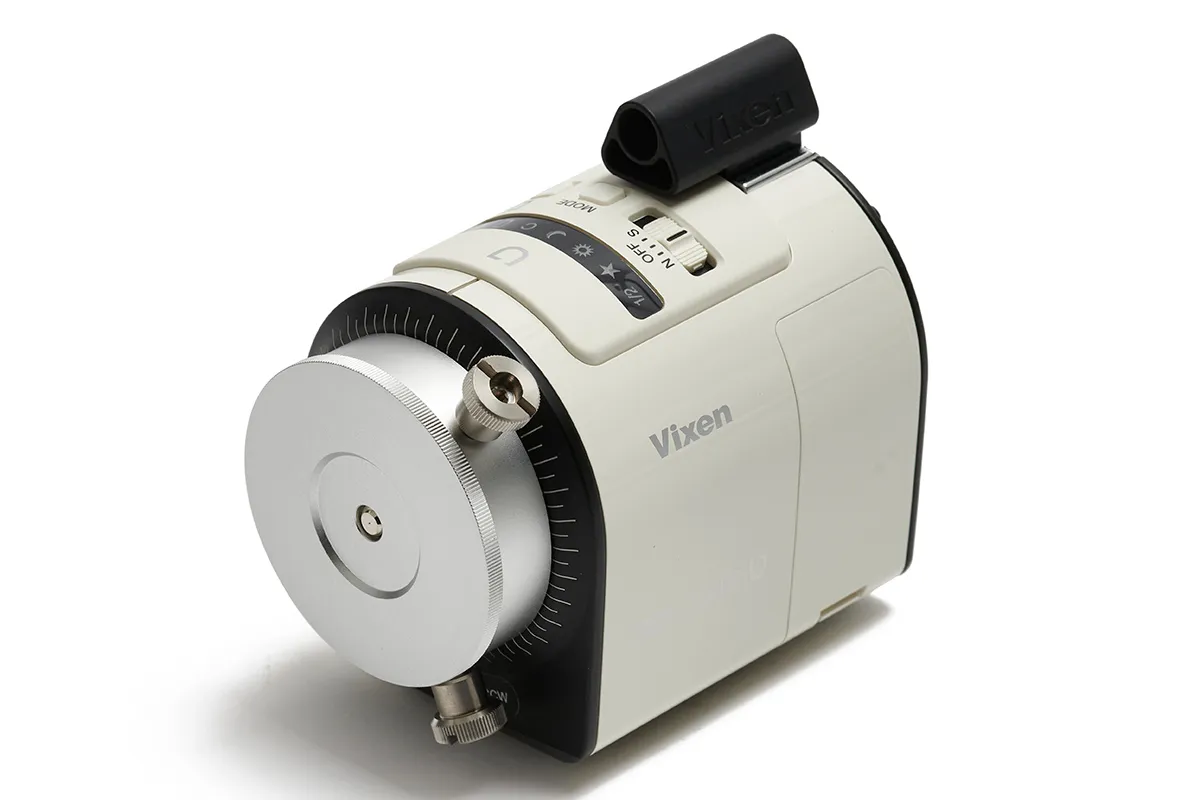
The housing of the Polarie U is plastic, but it feels very rigid and robust and doesn’t flex when pressed.
On the underside of the tracker there is a 3/8-inch thread with a 1/4-inch adaptor. This enables the mount to fit straight onto a tripod, or with the adaptor onto a ball head mount or similar.
The bottom of the mount also doubles as a foot, which is compatible with Vixen’s multi-use ball head, and this allows it to attach directly without the need to screw on.
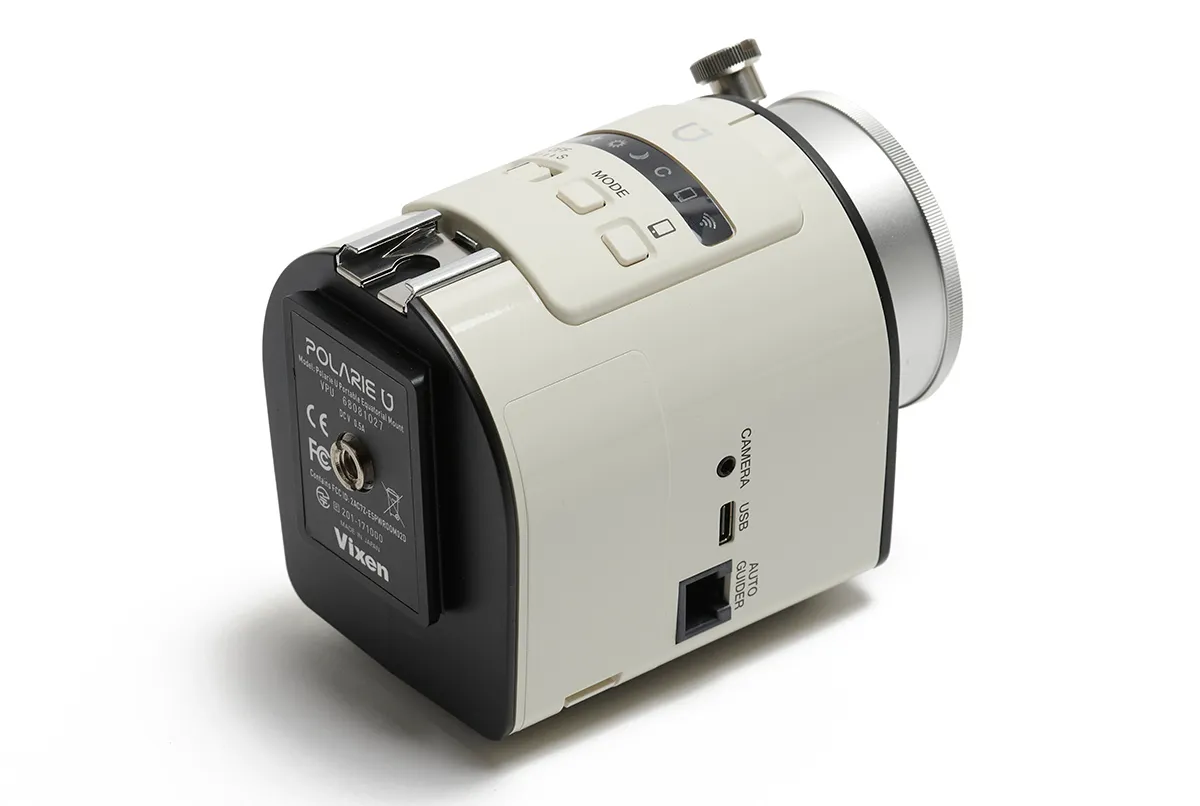
Vixen Polarie U Star Tracker controls
The tracker only has three buttons on the front: an ‘N’ and ‘S’ slider to select either the Northern or Southern Hemisphere (which also acts as a power button); a button to turn the Wi-Fi on and off; and a ‘Mode’ selection button.
Lights on the mount highlight which ‘Mode’ is selected (there is no LCD screen). This makes identification at night straightforward.
On either side of the mount there is space for 2x AA batteries (four in total), a guide port, a USB Type-C connection and a port for connecting your camera.
Vixen has put a lot of thought into the layout. The Polarie U is easy to operate in the dark, and all its lights are faint and red.
Setting up was very straightforward with no additional assembly required other than attaching the Polarie U to the ball head mount.
A further ball head will need to be attached to the top of the mount to enable the camera to be pointed.
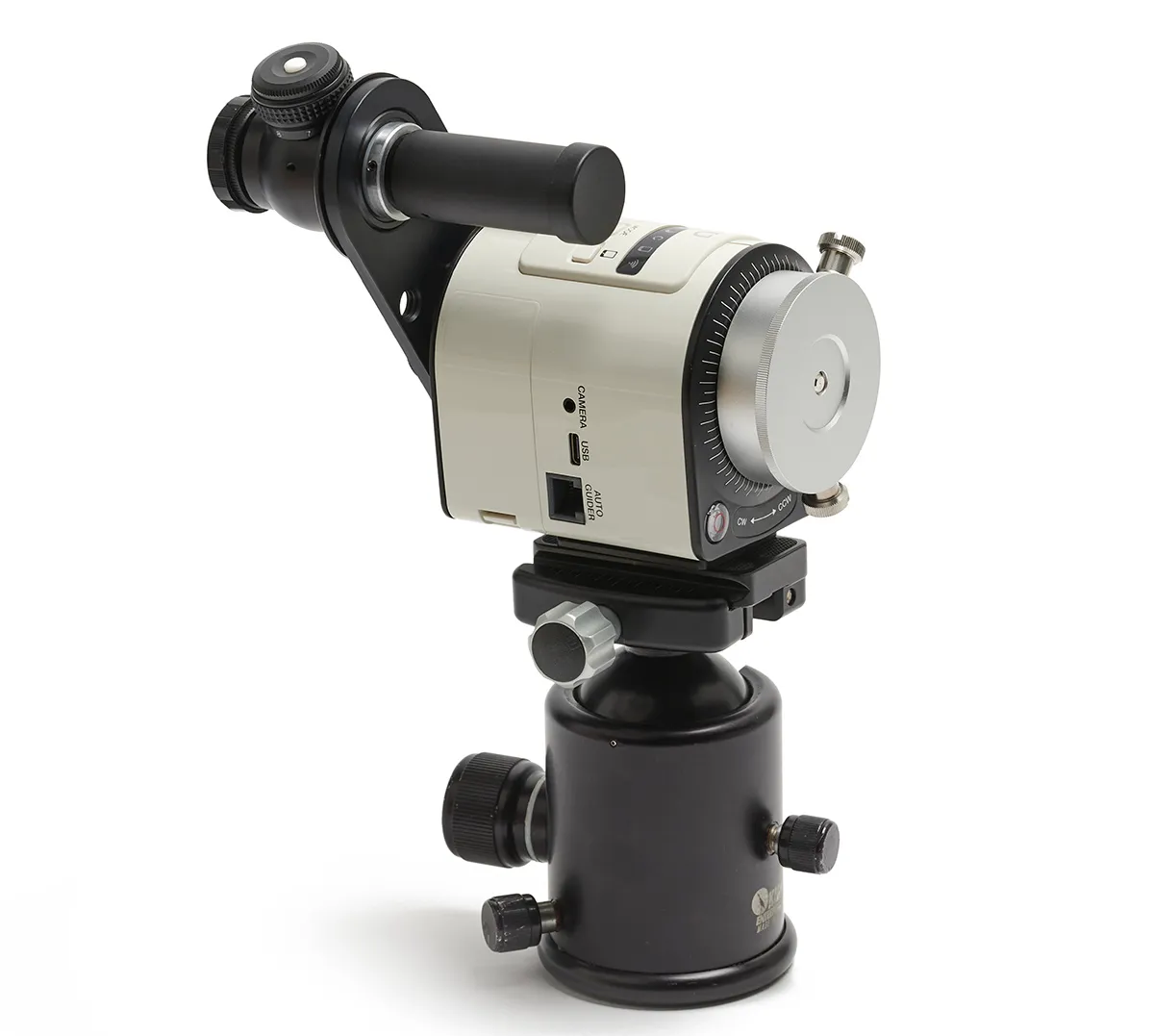
The camera mount is attached to the Polarie U by two thumbscrews so this can be fully detached (a carry-over feature from Vixen’s previous model), which allows the ball head and camera to be attached easily.
We were able to align on Polaris (Alpha (α) Ursae Minoris) in seconds using the plastic sighting tool supplied and the smooth optional Fine Adjustment head.
Trying this again with a standard photography ball head proved a little more difficult, so a geared head would be beneficial.
This rough alignment allowed us to obtain multiple-minute exposures with a 14mm wide-angle lens.
We then attached the optional polar scope that enabled us to refine our polar alignment by visually aligning Polaris and two other stars against the image printed within the polar scope.
This process was straightforward and was never blocked by the way the polar scope attaches, meaning it could be used with a camera attached.
Using a 150mm lens on a cropped sensor DSLR camera we started to see star-trailing after 60 seconds, despite revisiting our polar alignment.
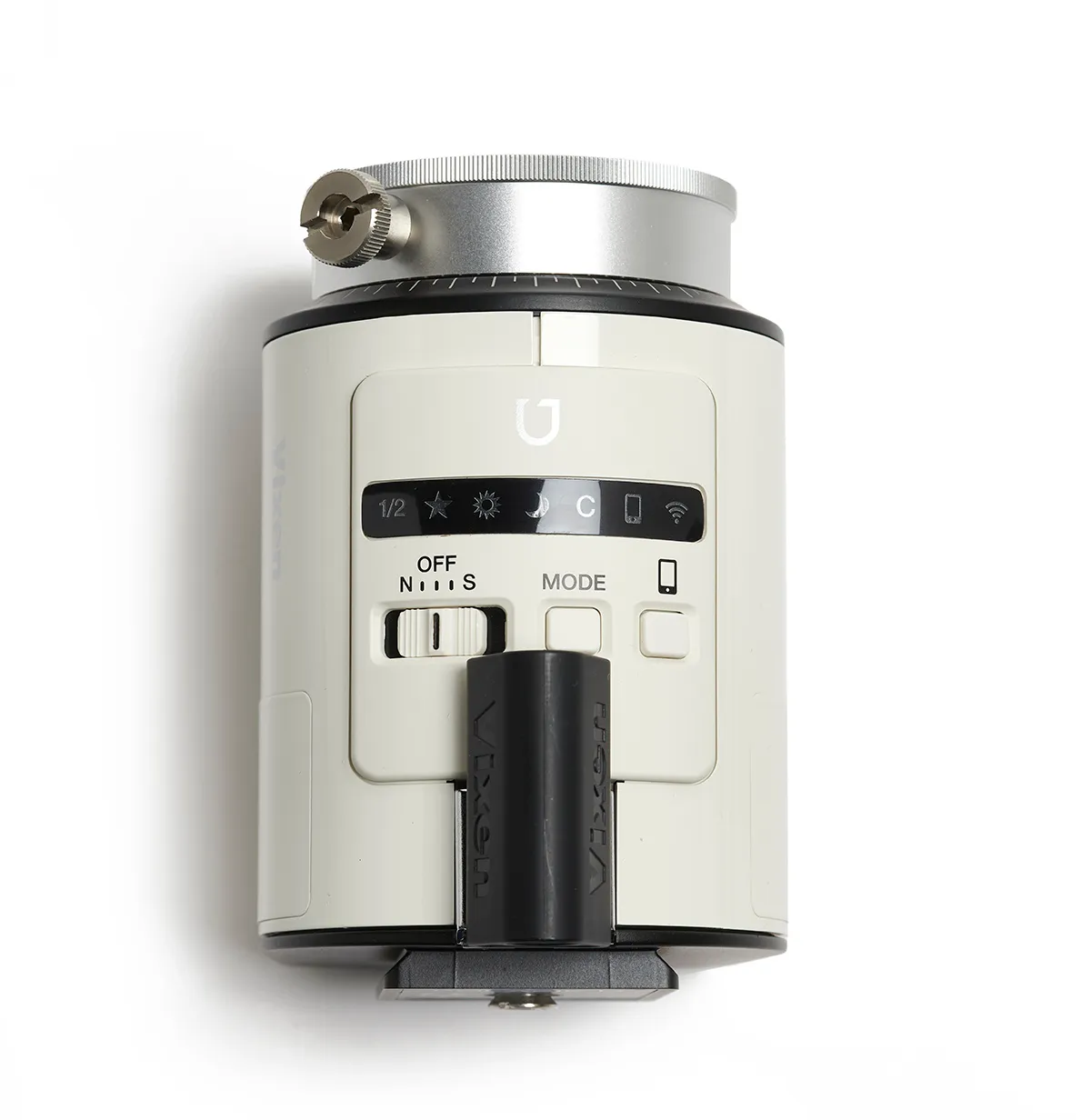
Switching down to a 50mm lens, we found that 60-second exposure shots gave pinpoint stars, but 120-second exposures were beyond our reach.
We set the camera running with 90-second and 60-second exposures with both our 50mm and 150mm lens, correcting the polar alignment after swapping the lenses over.
Inspecting the images in post processing, we only had to exclude 10 frames from the batch taken with the 50mm lens due to elongated or deformed stars.
However, with our 150mm lens weighing in at 1.7kg, we discovered that we had lost 32 of the 90 images we captured due to movement in the exposure, despite it being a very still night.
One of the Polarie U’s strongest points is its Wi-Fi capability and app connection.
Using an optional trigger cable to connect the camera to the mount meant we were able to control it from the Polarie U app and set our exposure time and number of exposures.
The benefit of this system is that once you are aligned you do not have to touch the camera again, reducing the risk of knocking it out of polar alignment.
The Polarie U is a very portable star tracker that, when partnered with a solid ball head mount, will enable you to capture the night sky in great detail.
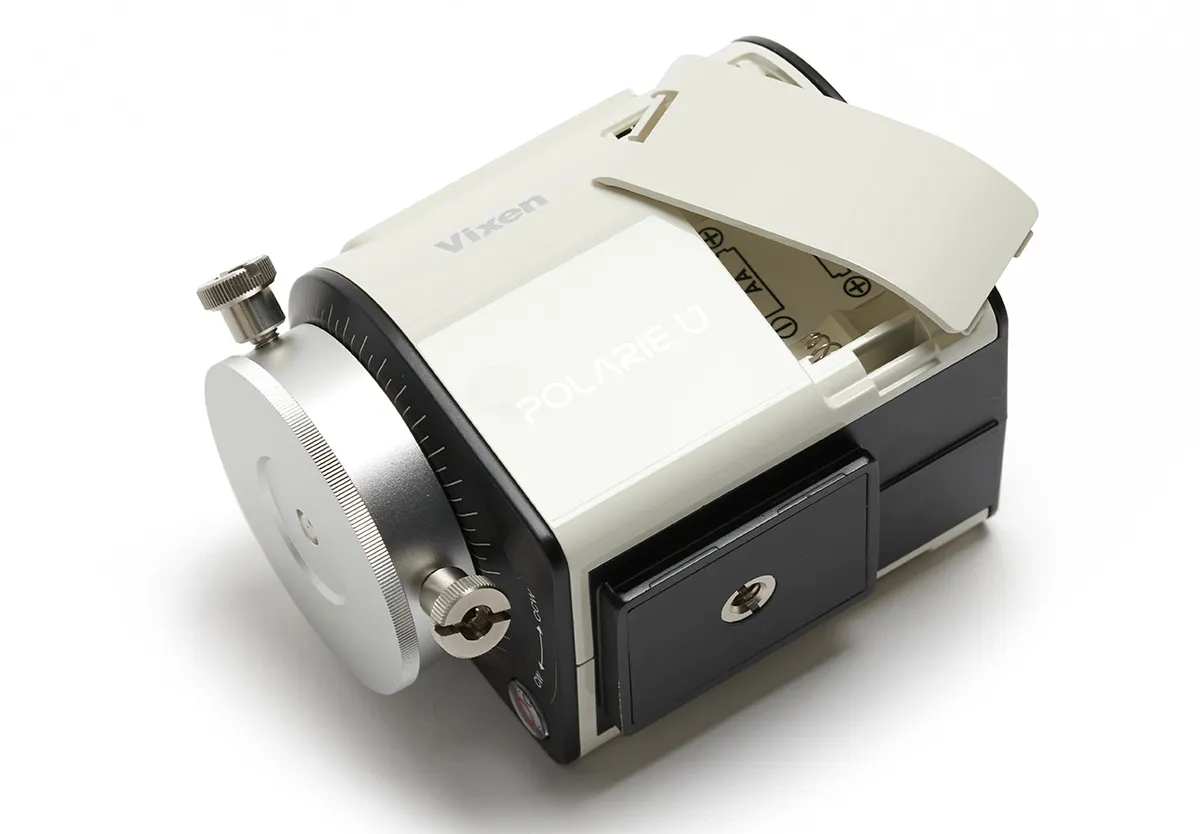
Vixen Polarie U Star Tracker: connection and control
The standout feature on the Polarie U is the ability to connect your camera directly to it and then control the entire setup from the Polarie U app.
The app is available to both Android and Apple users and is free to download. To set this up, you simply press the Wi-Fi button on the mount and then open the app on your phone to follow the steps and connect wirelessly to the app.
The app gives you access to change the tracking mode, so you don’t have to touch the mount.
There is also a built-in intervalometer (an advanced remote shutter release) that allows you to set your exposure time and number of shots, which is useful if you have purchased the appropriate camera connection cable. This is enough to cover any imaging goals.
The app has been designed to be used at night as the colour can be set to red and made very dim, which will help maintain your night vision and not upset any nearby astronomers.
Vixen Polarie U Star Tracker: 5 outstanding features
1
Polar finder
The Polarie U comes with a plastic sight that fits on the hot shoe bracket (flash mount) on the tracker. This enables a very quick alignment to Polaris, the North Star. The process is ideal for shooting wide-angle views when precision isn’t needed. This adaptor will also fit on the hot shoe of your camera for target-alignment.
2
Tracking modes
Whether you are looking to capture the Milky Way, the Moon or a timelapse, the Polarie U will track it. Offering sidereal (the rate at which Earth spins on its axis), 0.5x star speed, solar and lunar rates for both Northern and Southern Hemispheres at the simple touch of a button, all astronomical targets are covered.
3
Mount connections
The Polarie U not only has a 3/8-inch photo tripod thread, with an included adaptor to ¼-inch thread to fit any tripod, but it also has two built-in ‘feet’ to connect to clamp-style mount heads, either in an equatorial position for astronomy or an altaz position for time-lapse photography.
4
Power
The Polarie U can operate from 4x AA batteries, which will easily power the mount for an imaging session. However, if you are planning a longer session the mount can be powered from the mains or from an external battery pack using a USB-C connection.
5
Guide port
For those looking to achieve longer exposure times, the Polarie U offers single-axis guiding via a guide port on the side of the mount. This will require the use of separate software and a guidescope, so the total payload weight should be considered if you are planning this
Vital stats
- Price: £577.50
- Payload capacity: 2.5kg
- Tracking rates: Sidereal, 0.5x star speed, solar, lunar; Northern and Southern Hemisphere-compatible
- Power requirements: 4x AA batteries or USB Type-C
- Dimensions: 88mm x 72mm x 110mm
- Weight: 575g
- Supplier: Telescope House
- Tel: 01342 837098
- www.telescopehouse.com
This review originally appeared in the November 2021 issue of BBC Sky at Night Magazine.
